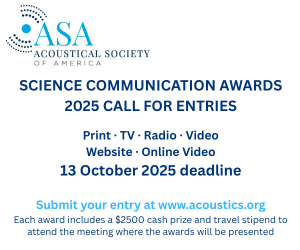By Christina B. Sumners
The impetus for this session was the relative lack of African American, Hispanic/Latino, and American Indian science journalists. The organizer and moderator, Alberto I. Roca, executive director of DiverseScholar, acknowledged that although there are many other types of diversity, this panel chose to focus on race and ethnicity. Roca’s stated goal for the session was to "give voice and shine light on stories related to communities represented here" and provide practical strategies for including diverse voices in science stories.
Left to right: Mallory Black, Jacqueline Howard, Danielle N. Lee, Emiliano Rodríguez Mega; photo by Christina B. Sumners
Jacqueline Howard, a writer for CNN Health, said that diversity in health and science journalism is important because "as communicators, we all have power to shed light on life-impacting issues," like public health and science. Howard also said that having someone who represents a minority community can offer a different perspective on stories. "We all have blind spots," she said, "but [with] more diversity in a newsroom and among editors, then those biases and blind spots can be checked."
Even if you don’t recognize your own implicit biases when they occur, coworkers might, especially if they have different implicit biases. However, it can be difficult to discuss. Howard recommends against calling out the person directly, but instead mentioning to someone else, like an editor, that you had a question about why an angle or certain information wasn’t included in "our" story. This approach, especially the use of the word "our," shows that "you’re just trying to make the story stronger," she said.
Danielle N. Lee, biologist and science blogger, suggested science journalists of color speak about diversity wherever possible, especially at venues like the AAAS annual meeting and the National Association of Black Journalists convention. "We are bilingual in a way," Lee said. "We speak science and whatever relevant cultural metaphors" are present in the community. "Science is not universally perceived," she added, and so writers should "identify salient touch points for underserved communities," especially in regards to health and environmental justice issues like antibiotic resistance and water quality.
"People are not seeing themselves represented by the media," said Emiliano Rodríguez Mega, a Mexican freelance science journalist. He advocated increasing the number of diverse sources in stories. For example, when there is a multinational science paper, the media should interview not only the American and European authors, but also those from developing countries. Science is happening in Latin America, he said, and those stories have been chronically underreported. "By not turning in a biased story, you are serving your community and making the mainstream media better," he said. "If we do that, maybe one day we won’t have to talk about diversity anymore."


